Doughnuts, French fries, hash browns, and so on – each of these stories have a happy ending with smiling faces and full tummies, but the oil sitting in the pots doesn’t have one. The golden pot of liquid oil has now turned into a dark one laden with brown and black specks of grit. What a wasted effort! Can the oil regain its former golden glory?
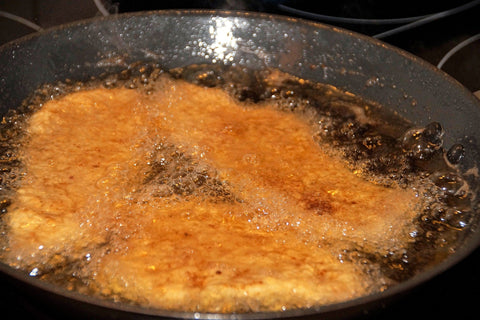
Good. Deep fry oil can be reused. It is safe to reuse the cooking oil after filtering and clarifying. However, there are two exceptions: smoked oil (either discarded or recycled) and fish-fried oil (partially reused to cook seafood alone). Oils rich in saturated fats and monounsaturated fats are preferred over others for reuse, as they do not break down easily and stay good at high temperatures.
Although frying is time-consuming, needs careful inspection, and is prone to accidents with hot oil handling, be it a kid or old, everyone loves fries. The risk is worth taking as no dish has ever conquered fried food.
But what to do with all the leftover oil is the big question. So come, let’s read on to see what we can do with the leftover oil and use it the best we can.
Smoking Points of Different Oils:
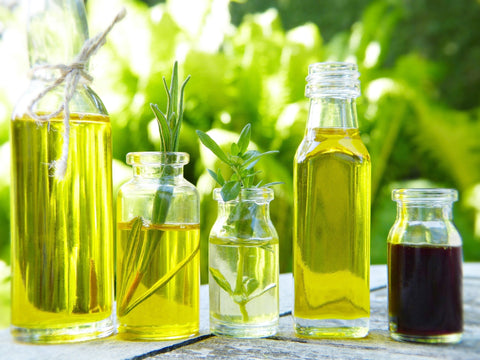
Smoking is strictly prohibited here. Whoa! But they all smoke after a certain point.
Extra virgin olive oil, butter, lard, and coconut oil have smoking points from 350 degrees F upwards.
Canola oil, peanut oil, olive oil, sunflower oil, and refined olive oil have high smoking points above 400 degrees F and are suitable for deep frying purposes.
Clarified butter, soybean oil, and safflower oil are high flyers with 450 degrees F and above smoking points.
Refined avocado oil – this superstar has the highest smoke point, ranging from 520-570 degrees F.
What is the solution for fish-fried oil?
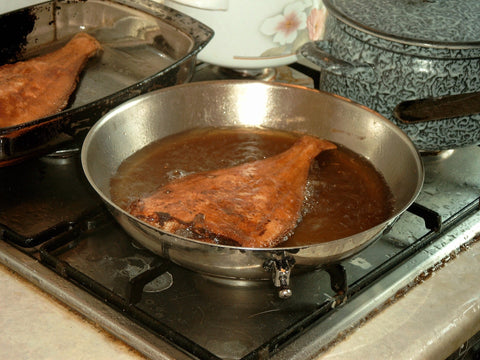
As far as nutritious food is concerned, the lean protein of fish is a healthy choice. Moreover, if you are a diehard fan of fish, you will be frying fish every so often. Everything is nice and sweet until you have to deal with a large pan of fishy-smelling oil left over. Do you have the habit of throwing the fish oil away? You don’t have to resort to that step. Let me give you some suggestions.
- Whatever you do, you can’t get rid of the fish smell and flavor in it. So, after filtering and clarifying it, store it in a cool, dry, dark place away from sunlight and use it to fry fish the next time you indulge in a fishy feast.
- Use it for any recipe that requires seafood preparation. You can use the grease for shrimp sauce, fish curry or use it again for frying other seafood. Use it up as quickly as you can.
What is the solution for smoked oil?
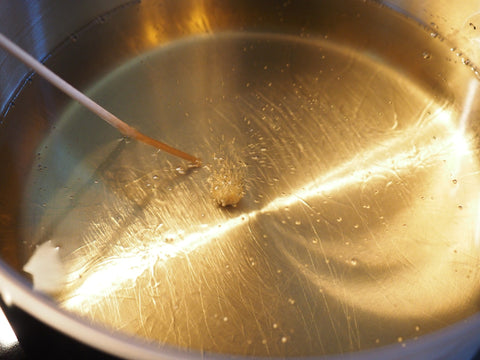
- The only solution I can think of for smoked oil is to top it with some fresh oil and reuse it three times max. The smoking point gets lowered further and further every time you reheat the oil, so keep that in mind.
- If I were you, I will put my health first and will safely dispose of it in sealed pouches or fat trapper bags into the garbage bin.
- If you have a local waste recycling service, you can drop it off there.
- This option is worth trying. Recycle your cooking oil by making soap out of it.
- A little bit of old cooking oil, few drops of dishwasher soap, and a quart of water are all you need to make this insecticide spray. Spray the mixture on insect-infested plants in your kitchen garden and keep those insects away.
- Restaurants in the US are giving away their used oil to biofuel plants for recycling, which is an excellent option.
- Composting vegetable oil in sparse amounts is another eco-friendly option.
- Using it as lamp oil is an option.
Are We Safely Disposing of Oil Without Hurting The Environment?
Are you calling your plumber often because of clogged drains? Don’t worry. You have company. Many of us don’t know how to dispose of old oil and toss the gunky oil down the drain. Sadly, even a small amount of the discarded oil can contaminate an ocean of sewage water. It is time to stop doing it this way and safely dispose of the oil in an unbreakable container with the trash.
How to Clean the Used Cooking Oil?
-
Filtration Method:
Place several layers of cheesecloth on a metal strainer to strain off the impurities from the oil used for frying breaded or battered foods. The resultant is a clean-looking oil. If you place a coffee filter over the metal strainer, it will take ages (about a day) for the oil to drain through it. If you have all the time, you can resort to this method. However, it will only filter the oil and will not clarify the oil.
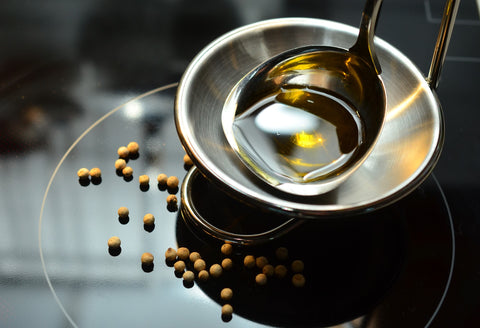
-
Corn Starch and Water Method:
It feels criminal to waste such a large amount of oil after using it for deep frying. This method works like a charm.
A tablespoon of corn starch powder is mixed with a quarter cup of water to form a uniform slurry. Pour it in nicely cooled, deep-fried oil and mix it well. Heat it over low flame, taking care not to boil the oil. Instead, heat it in medium flame for about 10-12 minutes, constantly stirring it.
The corn starch cooks into a blob collecting all the suspended impurities. Next, filter it in a fine mesh filter. The cloudy-looking oil will settle down after a little while and will become transparent. You can use it 2-3 times after clarifying the oil through this method.
Tip: Oil heated to the smoking point and oil used to fry fish can’t be clarified using this method.
-
Magnesium Silicate Filtration Method:
This is the best filtering method known for used cooking oil. The oil filter media in this type of filtration is magnesium silicate. Magnesium silicate used here is synthetic and amorphous (lacking form), not crystalline. As a result, the filtered oil’s life is longer by about 50%, improving the oil’s clarity. In addition, it also enhances the nutritional value of the oil more than filtration by other methods.
How Many Times Can We Reuse A Cooking oil?
Some sources say up to eight, but I am not happy with the number. Each time we heat the oil up, the smoking point lowers. So I want to rephrase that question.
How Many Times Can We Reuse A Cooking Oil Safely?
Not more than 2 or 3 times at the most is my honest answer. Whether you use the oil for frying potato wedges or battered chicken fries, the oil has a short life.
Reaching the smoking point means the oil starts to break into glycerol and fatty acids, loses its nutrient value, and becomes carcinogenic. It can also put you at the risk of developing cardiovascular diseases, diabetes, and obesity. Now, why should you put your family’s health at risk just for the sake of saving a few dollars!
To stay on the safe side, don’t use the deep-fried oil again for deep frying. Instead, use the oil for other cooking purposes. If you need to deep fry, take fresh cooking oil and start anew.
Ways to Preserve Your Cooking Oil’s Integrity
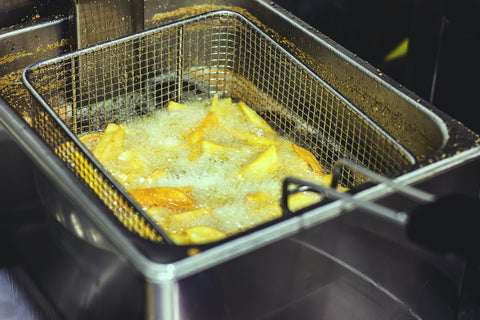
-
Make Your Food Dry Before Frying:
Patience is a rare virtue, especially when waiting for those pork sausages to defrost. If you have the habit of dunking your food in the oil soaking wet or before they thaw, you need to know that water in the food breaks down the oil faster.
-
Use a Candy Thermometer:
A keen eye and a candy thermometer are the two things you need if you want to conserve the oil’s stability and watch out for the smoking point.
If you drop your food into the oil that hasn’t reached the right temperature, the food will get soggy and drippy. But if the oil is scalding hot, it will burn the outsides of the food, leaving the insides uncooked. Therefore, heating the oil to the right temperature and maintaining it throughout the cooking process is essential.
Cooking with a broken oil will spoil your food right in the pot.
-
Choose An Oil That Has a High Smoking Point:
Whatever your choice of oil is, canola, peanut, safflower, soybean, butter oil, lard, or sunflower, make sure that it has a high smoking point. These oils don’t break down easily. These oils are also pocket-friendly and have a neutral flavor.
-
Sugar Dangers:
Making high sugary fries is like adding fumes to the flame. While it is dangerous enough to use used oils, sugars in the food contribute to more harm. So, opt for fresh oil when making sweet fries and never reuse them again for frying purposes.
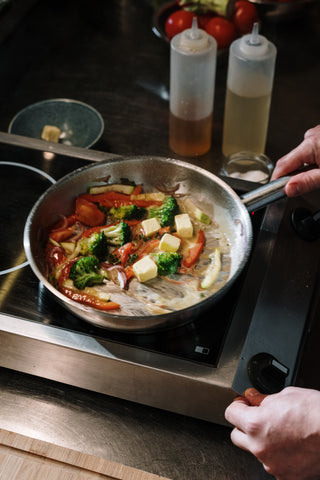
-
Separate and Store the Oils:
Divide the oils used for making sweet treats and spicy fries. The catch is oils used for frying foods pick up the flavor of food cooked in them. So, where the flavor doesn’t show up, you can reuse them diversely.
The oil that we used to make deep-fried waffles can be drizzled on the sides of a pancake. But, on the other hand, chicken oil will enhance the flavor and taste of chicken noodles that you are cooking and merges well with the dish.
-
Knowing The Time To Say Goodbye:
Cloudy, frothy or bubbly, dense texture, dark-colored like coke, or heavy, acrid smell are all telltale signs that say it is time to bid goodbye.
If your oil has been sitting on the pantry shelf for more than two months, open it and smell it. The best informer of the freshness of the oil is the smell. Anyone can find a rancid smell. It is similar to rotten fruit odor, which is a clear indication of rancidity. It is time to dispose of it.
Oils of Different Types
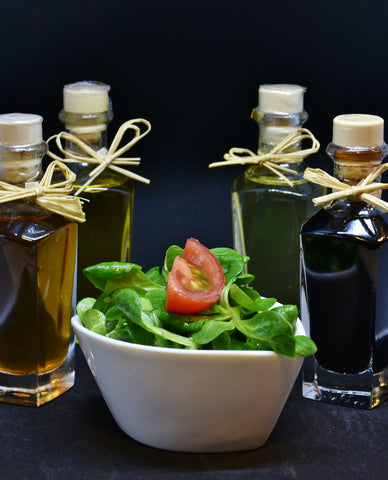
Myth or Fact:
There was much confusion about whether vegetable oil or animal fat is better. Earlier, animal fats were the baddies as they were believed to raise the risk of developing cardiovascular diseases and diabetes. On the other hand, vegetable oils were good for health, but recent research tells us otherwise.
When subjected to heat, the oil undergoes chemical changes (oxidation, hydrolysis, and polymerization, which are the main culprit). Otherwise, all oils keep well at room temperatures.
The polyunsaturated fats in vegetable oils generate high levels of harmful aldehydes when heated. At the same time, saturated and monounsaturated fats produce fewer aldehydes. So, the oils high in monounsaturated fats and saturated fats and low in polyunsaturated fats are a better bet.
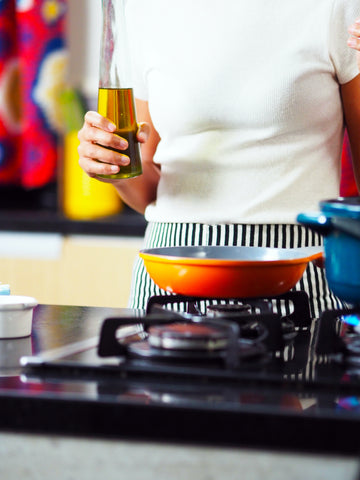
Vegetable Oil:
The extracts of fruit, seed, nut, and grain make up vegetable oil. They are rich in monounsaturated fats (resistant to heat) and polyunsaturated fats (break down easily when heated). Therefore, toxic aldehydes are produced when vegetable oils are heated beyond a certain temperature, which is bad for health. The exceptions are olive oil and liquid soybean oil.
Animal Fat:
Studies show that the naturally found saturated fats in the animal oil endure and stay stable during high temperatures. It oxidizes less, so they don’t tend to turn toxic or become carcinogenic. Recent research has finally broken the myth that animal fat is bad.
Lard:
Lard is animal fat usually gotten from the parts of the pig through a process called rendering. The fat from the pig’s tummy, butt, and shoulder parts is subjected to slow cooking by steaming, boiling, or dry heat. The melted fat is separated and reserved. It is said to be healthier than butter and is heart friendly. This semisolid fat is also rich in oleic acid, lowers cholesterol, and maintains healthy cells. The bacon grease has high good fat content, which is the monounsaturated fats.
Clarified Butter/Ghee:
This is an excellent option compared to other oils due to its high smoking point and stability. Loaded with the same nutrients as butter, it is a vitamin-rich cooking oil with saturated and monounsaturated fats.
Conclusion
In my home, my kids’ eyes are wide open with excitement and expectation when the aroma of the fried delicacy wafts from the kitchen. They transform into angels and are well-behaved, for a short while, of course, until the treat is eaten up.
Fried food is a killer, but they help you live life to its fullest. Finally, the choice is yours!

